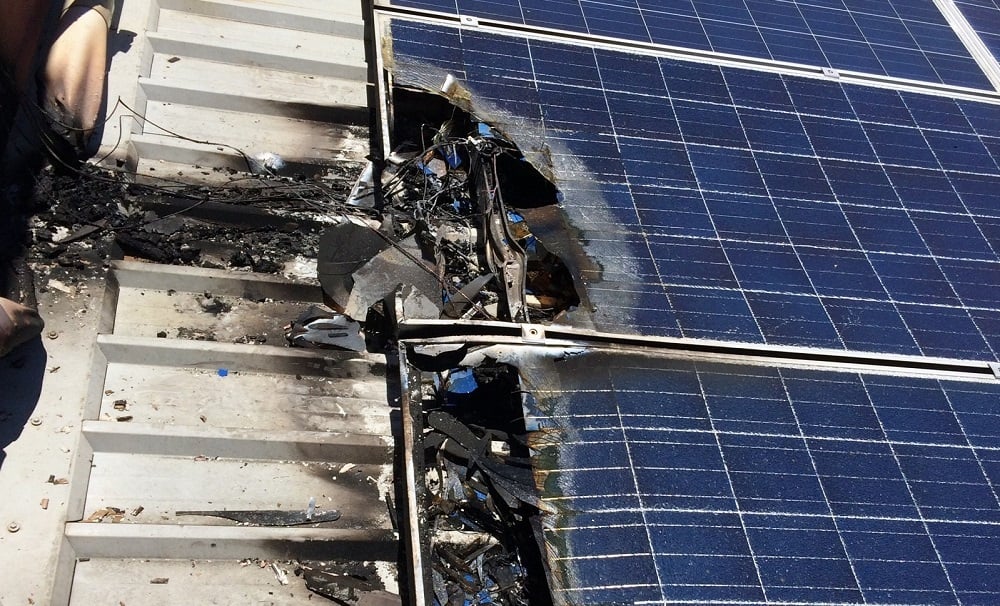960
When it comes to the safety of photovoltaic systems, it is important to know what happens in the event of a fire. The fire department plays a crucial role here. But how do they proceed? Do they extinguish the system or let it burn down in a controlled manner?
Fire hazard with photovoltaic systems: myths and reality
There is a persistent myth that photovoltaic systems do not extinguish fires, but burn down in a controlled manner. But the reality is different.
- Of course, the fire department also extinguishes houses with photovoltaic systems. Only special extinguishing conditions must be observed, as the system is energized
- A guideline for PV fires was drawn up back in 2010 and distributed to the fire departments.
- The guideline states that firefighting on photovoltaic systems is possible without restrictions if all standard operational principles and the special rules for operations on electrical systems are observed.
Safety measures and extinguishing methods for fires involving photovoltaic systems
Fighting fires in buildings with photovoltaic systems effectively and safely requires special extinguishing methods and precautions.
- Direct extinguishing with water is easily possible on PV-protected buildings, either with a full jet from five meters, or with a spray jet even from a distance of one meter.
- In the event of a fire in an electricity storage system, it is important to cool the battery immediately. This requires the use of water to effectively prevent the decomposition of cells.
- When fighting fires with photovoltaic systems, it is also essential to comply with all regulations and safety standards in order to minimize the risks.
- The fire department should gather information about the PV system, including type and location, by consulting the operator’s fire department plans. During the approach, care must be taken to maintain sufficient safety distances
- On arrival at the scene, it is important that the fire department first investigates the situation and assesses the hazards. The following aspects should be taken into account: Type and extent of the fire, position of the PV system, stability of the roof, fire behavior of the materials,potential sources of danger (e.g. electric shock, toxic fumes).
- Extinguishing measures should be carried out in such a way that the emergency services are not endangered. The following steps can be taken for this purpose: Disconnecting the system (if possible), using water (spray jet or full jet) to fight the fire, cooling the system.
- After extinguishing the system, the emergency services should check the system for potential hazards. This includes: Checking the roof stability, removing fire residues, disposing of pollutants.

